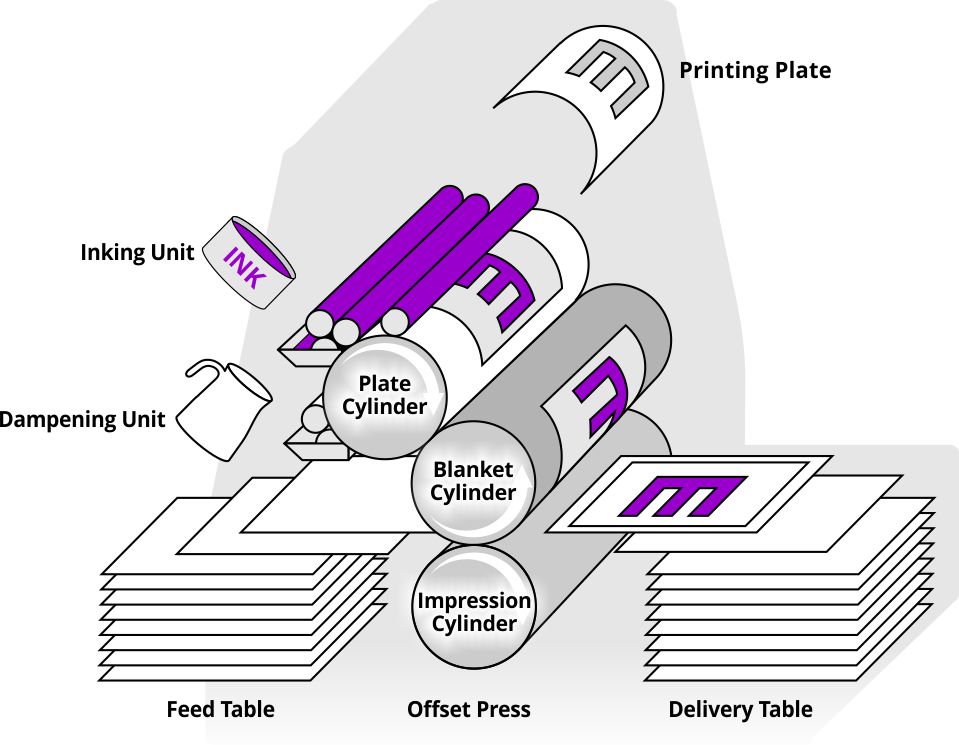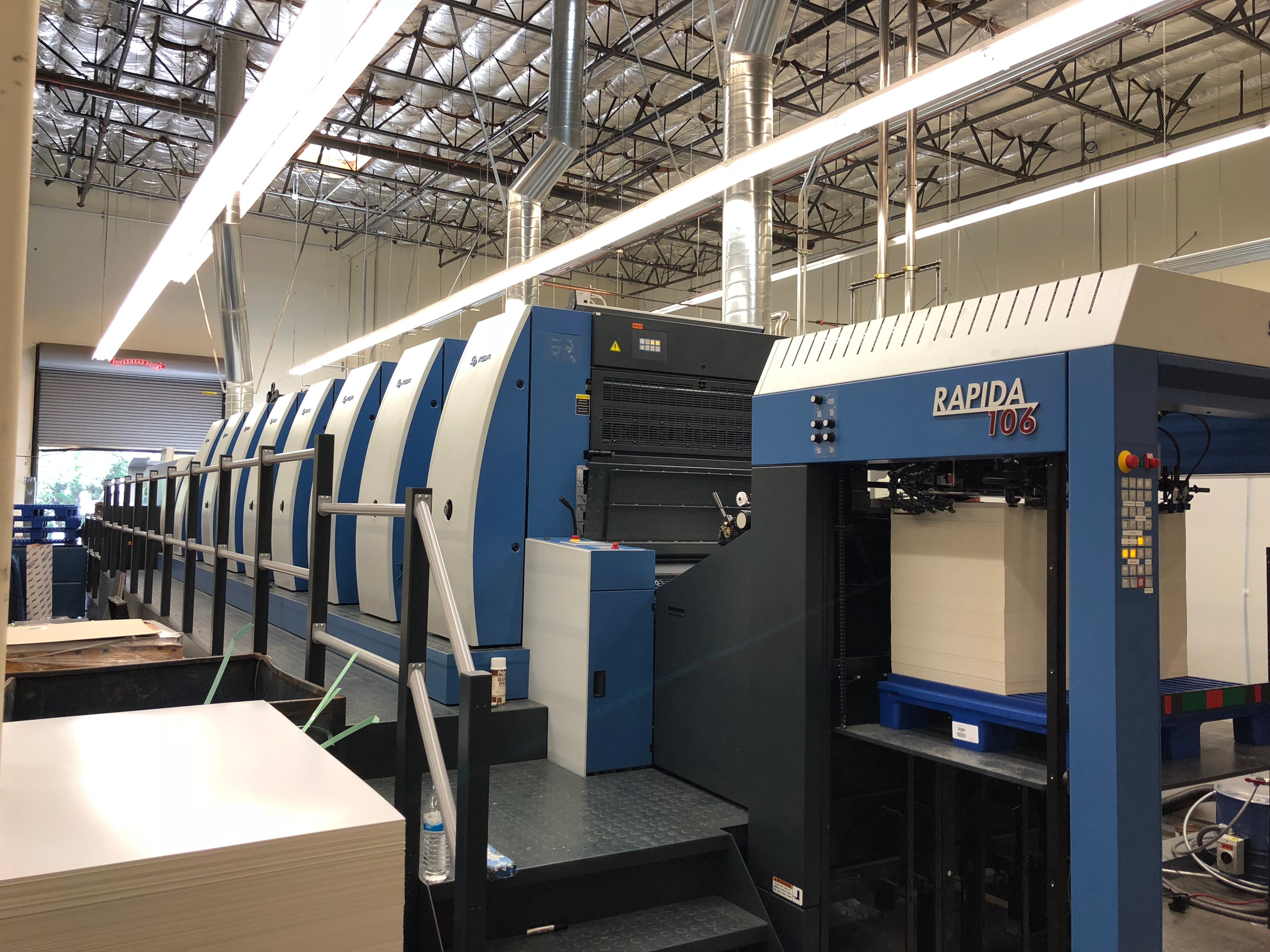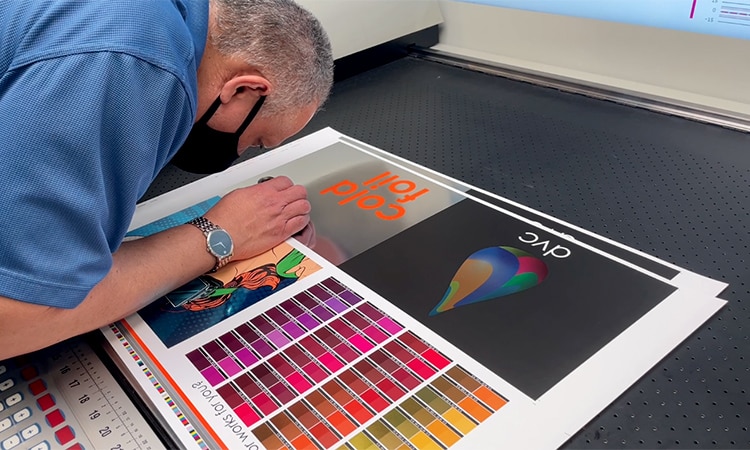A Comprehensive Overview to Comprehending Litho Printing Methods
The globe of litho printing, a strategy originating from the late 18th century, is a fascinating mix of history, art, science and development. Remain with us as we trip into the fascinating world of litho printing.
The Historic Development of Litho Printing
The historical trajectory of litho printing, a crucial advancement in the world of communication, is an exciting story of human resourcefulness. The procedure progressed with the development of the rotating press, which significantly enhanced productivity. Each phase of litho printing's development showcases humanity's ruthless search of efficiency and quality in visual interaction.
Deciphering the Science Behind Litho Printing Inks
Progressing in the exploration of litho printing methods, the focus currently shifts to the scientific research behind litho printing inks. The structure of these inks, their drying process, and shade mixing techniques form the backbone of this complex art kind. Recognizing these components is crucial to grasping the craft and attaining the wanted print outcomes.
Structure of Litho Inks
In lithographic printing, the essential role of litho inks can not be overstated. Pigments, the color-providing elements, are finely ground bits suspended in the vehicle, a liquid that lugs the pigment onto the printing surface area. Each element plays a critical part in the last print's high quality, making the precise formulation of litho inks an elaborate science.
Ink Drying Process
From the make-up of litho inks, interest transforms to the fascinating procedure of ink drying. The drying process is crucial, as it impacts the last print's top quality and durability. 2 primary methods are utilized in litho printing: oxidative drying out and absorption. Oxidative drying out includes the ink reacting with oxygen in the air to develop a difficult, completely dry movie. This approach gives a resilient surface, however can be slower compared to absorption. Absorption, on the other hand, includes the ink permeating into the paper fibers, which is a quicker procedure but can lead to less vibrant colors. The selection between these approaches is dependent upon aspects such as print rate needs, the paper kind made use of, and the desired finish.
Color Mixing Strategies
While the drying process plays a vital role in litho printing, the scientific research of shade mixing methods holds equivalent significance. The science behind litho printing inks also takes right into account the openness of the ink, which affects how shades overlay and mix.
The Art and Design Components in Litho Printing
Litho printing takes a breath life into art and design via its one-of-a-kind elements. The process involves developing a photo on a lithographic limestone plate or metal plate with a smooth surface area. The photo is after that printed onto a medium, normally paper, by moving the ink from home plate. What collections litho printing apart is its ability to duplicate complex layouts with high integrity, making the output almost similar to the original artwork. This is accomplished via making use of various line techniques such as cross-hatching, hatching, and stippling, which permit for a variety of tonal effects. Litho printing accommodates a variety of colors, enabling musicians to create lively and dynamic prints. This combination of accuracy and flexibility makes litho printing a preferred selection for numerous artists and developers.
Modern Applications of Litho Printing Techniques
Litho printing strategies have found considerable use in the modern business market. Its impact and significance remain to grow with the advent of brand-new developments and technologies in the area. This section will explore these contemporary applications and the transformative function they play in the printing industry.
Industrial Litho Printing Makes Use Of
In today's digital age, one may ask yourself regarding the relevance of typical printing methods. Litho printing continues to be a critical component of the commercial sector. High-volume printing tasks, such as the manufacturing of publications, newspapers, and product packaging, rely upon litho printing for its capacity to deliver remarkable photo quality and cost effectiveness. The procedure, which entails transferring an inked picture from a plate onto a rubber covering and after that to the printing surface area, offers unrivaled uniformity. This makes it optimal for jobs requiring a big print run. Litho printing likewise gives a wide color spectrum, exceptional to that of digital printing. This makes it the go-to selection for jobs that require dynamic, premium color reproduction.
Developments in Litho Printing
Pushing the boundaries of traditional techniques, modern-day innovations have actually fueled a host of developments in litho printing. These advancements have not only boosted the top quality and effectiveness of litho prints yet additionally increased its application range. One popular development is electronic litho printing, which incorporates the virtues of digital modern technology with litho's high-grade result. This hybrid design provides faster arrangement times, lowered waste, and you can try here allows on-demand printing. Another noteworthy advancement is the introduction of environmentally friendly inks. These inks, made from vegetable or soy-based services, have substantially lowered the industry's ecological effect. litho printing. In addition, the advancement of advanced plate modern technology has structured the printing process, causing sharper images and improved color integrity. These developments emphasize the long-lasting relevance of litho printing in the contemporary globe.
Discovering the Refine of Litho Printing: Step by Step

Challenges and Solutions in Contemporary Litho Printing

Despite the accuracy and custom that litho printing happily upholds, it is not without its set of modern challenges. The most widespread issues include the high preliminary configuration cost, trouble in printing variable data, and environmental worries due to chemical usage. Nevertheless, remedies are becoming innovation advances. Digital litho printing allows for affordable short runs and simple modification, resolving the problem of variable data. Environmentally-friendly inks and safer plate-making processes reduce ecological worries. In addition, advancements in automation have minimized labor expenses, better his explanation equalizing the lithography procedure. Hence, while there are obstacles, the litho printing sector is proactively adjusting to fulfill them head-on, guaranteeing its significance in the future.
Conclusion
To conclude, litho printing, with its rich history and scientific complexities, holds a considerable area in the print sector. As the guide exposes, it's a synthesis of art and modern technology, with contemporary improvements guaranteeing its relevance. The market faces difficulties that require cutting-edge options, with a focus on automation and sustainability. The future of litho printing hinges on its capability to adapt to these changing needs, attesting its enduring value in a developing market.
